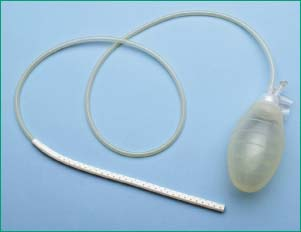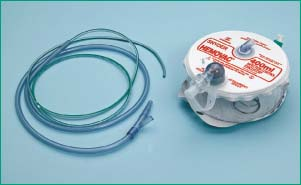Closed-Wound Drain Management
Typically inserted during surgery in anticipation of postoperative drainage, a closed-wound drain promotes healing and prevents swelling by suctioning the exudate that accumulates at the wound site. By removing this fluid, the closed-wound drain helps reduce the risk of infection and skin breakdown as well as the number of dressing changes. The drain is usually emptied every shift and as needed. Jackson-Pratt and Hemovac closed drainage systems are used most commonly. (See Types of closed drainage systems.)
A closed-wound drain consists of perforated tubing connected to a portable vacuum unit. The distal end of the tubing lies within the wound and usually leaves the body from a site other than the primary suture line to preserve the integrity of the surgical wound. The tubing exit site is treated as an additional surgical wound; the drain is usually sutured to the skin.
If the wound produces heavy drainage, the closed-wound drain may be left in place for longer than 1 week. Drainage must be emptied and measured frequently to maintain maximum suction and prevent strain on the suture line.
Types of Closed Drainage Systems
There are two common types of closed drainage systems. The Jackson-Pratt drain collects exudate in a bulblike device that’s typically used with breast and abdominal surgery.
 |
The Hemovac drain is used when blood drainage is expected after surgery, such as in abdominal and orthopedic surgeries.
 |
Equipment
Graduated cylinder ▪ alcohol pads ▪ gloves and other personal protective equipment as needed ▪ sterile gauze pads ▪ antiseptic cleaning agent or antimicrobial swabs ▪ sterile laboratory container, if needed ▪ Optional: label.
Implementation
Verify the doctor’s order.
Confirm the patient’s identity using at least two patient identifiers according to your facility’s policy.1
Explain the procedure to the patient and provide privacy.

Stay updated, free articles. Join our Telegram channel

Full access? Get Clinical Tree


Get Clinical Tree app for offline access
